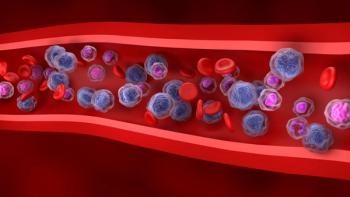
FDA Approves Cinvanti Injection for Chemotherapy-Induced Nausea and Vomiting
The U.S. Food and Drug Administration has expanded the approval of Cinvanti injectable emulsion to include a two-minute intravenous use for the prevention of acute and delayed chemotherapy-induced nausea and vomiting.
The U.S. Food and Drug Administration (FDA) has expanded the approval of Cinvanti (aprepitant) injectable emulsion to include a two-minute intravenous (IV) use for the prevention of acute and delayed chemotherapy-induced nausea and vomiting.
The decision is based on results of a two-part, phase 1 study that demonstrated bioequivalence and a similar safety profile for patients who received Cinvanti as a standard 30-minute IV infusion compared with a two-minute IV injection, which is also referred to as an IV push.
Cinvanti is a polysorbate 80-free, IV formulation of an NK1 receptor antagonist, which is designed to significantly reduce chemotherapy-induced nausea and vomiting in both the acute and delayed phases following chemotherapy. The FDA previously approved Cinvanti as a 30-minute IV infusion in November 2017, making it the first IV formulation to directly deliver Cinvanti, which is the active ingredient in Emend (fosaprepitant) capsules.
"Cinvanti, delivering the efficacy of aprepitant, but without polysorbate 80, has been an important addition for the prevention of chemotherapy-induced nausea and vomiting. Notably, data now show that the two-minute IV push has comparable safety to the 30-minute IV infusion,” said Rudolph M. Navari, M.D., Ph.D., Division of Hematology Oncology, University of Alabama, Birmingham School of Medicine. “This approval will enable physicians to leverage the operational advantages of this method of administration and will contribute to a reduction in total patient time spent in the infusion suite."
Part A of the study randomized 24 patients to receive Cinvanti at 130 mg IV via injection over 15 minutes, five minutes or two minutes. The primary endpoint was tolerability and safety of single doses of Cinvanti across the 3 cohorts. Patients then progressed to Part B of the trial, which was a two-sequence crossover study, following establishment of acceptable tolerability.
In Part B, 50 patients were randomized to receive a two-minute injection of 130 mg Cinvanti at 9 ml/min or a 30-minute infusion at 296 ml/h. The primary endpoint was pharmacokinetics of plasma Cinvanti following a single dose as an injection or infusion; secondary endpoints were safety and tolerability. The mean age of patients was 34; 19 patients were female and 31 were male.
Results showed bioequivalence between the two administration arms, confirming the short injection as an alternative method to administer Cinvanti to patients.
Regarding safety, eight patients on the injection arm experienced 11 treatment-emergent adverse events (TEAEs; six related) versus nine patients who experienced 14 TEAEs (nine related) in the infusion group. The most prevalent treatment-related TEAEs were headache and fatigue; one patient in each arm reported feeling hot approximately 30 minutes following treatment.
The initial approval of Cinvanti was based on findings from two randomized, crossover studies that demonstrated the bioequivalence of Cinvanti to Emend IV for the prevention of acute and delayed CINV following highly emetogenic cancer (HEC) chemotherapy and moderately emetogenic cancer (MEC) chemotherapy. Specifically, results showed that patients who received Cinvanti reported fewer adverse events (AEs) than those who received IV Emend, including substantially fewer infusion-site reactions.
"We are pleased to have strengthened our [chemotherapy-induced nausea and vomiting] franchise with today's label expansion for Cinvanti, as we now have the only NK1 [receptor antagonist] that offers the benefits and flexibility of an IV push method of administration," said Barry Quart, PharmD, president and chief executive officer of Heron Therapeutics. "Administration of Cinvanti by two-minute IV push is an important advantage for our customers compared to Emend IV, which requires reconstitution and an IV bag for infusion."
This article originally appeared on





